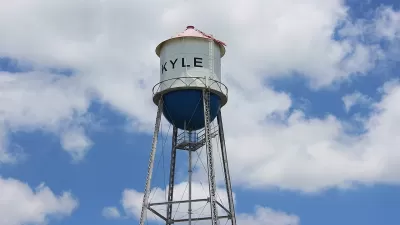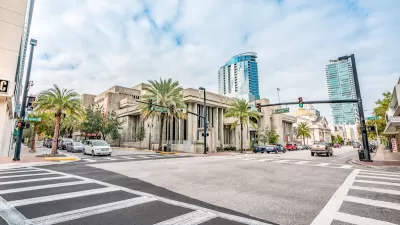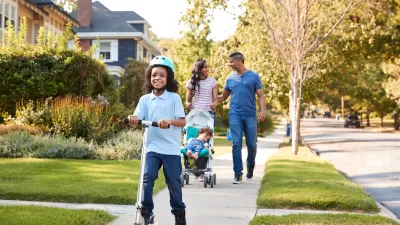In the aftermath of the presidential election, an observation by the star statistician Nate Silver about the connection between sidewalks and voting patterns has been getting a lot of play. Robert Steuteville tries to depoliticize walkability.

Silver's simplified assessment that "if a place has sidewalks, it votes Democratic. Otherwise, it votes Republican," certainly seems to have some truth to it, especially in light of the anti-urban stance of the Republican party. Adds Steuteville: "Sidewalks can even be seen as a kind of metaphor for two kinds of living. Without sidewalks: Independent, anti-government, don't tread on my land. With sidewalks: Communitarian, we're all in this together, equal rights on this right-of-way."
However, as Steuteville points out, "[m]any people who prefer the city and town life are not liberals. Many small towns, with sidewalks and old-fashioned main streets, are politically conservative."
"Our nation needs places with sidewalks and without. We need farmers, we need ranchers, we need the people to work the land. But we also need cities and towns that generate most of our economic activity and, without which, the farmers would have no markets."
It's in the nation's interest to depoliticize walkability, argues Steuteville. "People of all political stripes can benefit from genuine communities with transportation options. Our nation can be strengthened by the sustainability and fiscal resilience of walkable communities."
"Maybe it's time we built a sidewalk that helps bridge the great divide between Red and Blue," he concludes.
FULL STORY: A sidewalk to bridge Red and Blue

Maui's Vacation Rental Debate Turns Ugly
Verbal attacks, misinformation campaigns and fistfights plague a high-stakes debate to convert thousands of vacation rentals into long-term housing.

Planetizen Federal Action Tracker
A weekly monitor of how Trump’s orders and actions are impacting planners and planning in America.

San Francisco Suspends Traffic Calming Amidst Record Deaths
Citing “a challenging fiscal landscape,” the city will cease the program on the heels of 42 traffic deaths, including 24 pedestrians.

Defunct Pittsburgh Power Plant to Become Residential Tower
A decommissioned steam heat plant will be redeveloped into almost 100 affordable housing units.

Trump Prompts Restructuring of Transportation Research Board in “Unprecedented Overreach”
The TRB has eliminated more than half of its committees including those focused on climate, equity, and cities.

Amtrak Rolls Out New Orleans to Alabama “Mardi Gras” Train
The new service will operate morning and evening departures between Mobile and New Orleans.
Urban Design for Planners 1: Software Tools
This six-course series explores essential urban design concepts using open source software and equips planners with the tools they need to participate fully in the urban design process.
Planning for Universal Design
Learn the tools for implementing Universal Design in planning regulations.
Heyer Gruel & Associates PA
JM Goldson LLC
Custer County Colorado
City of Camden Redevelopment Agency
City of Astoria
Transportation Research & Education Center (TREC) at Portland State University
Jefferson Parish Government
Camden Redevelopment Agency
City of Claremont





























